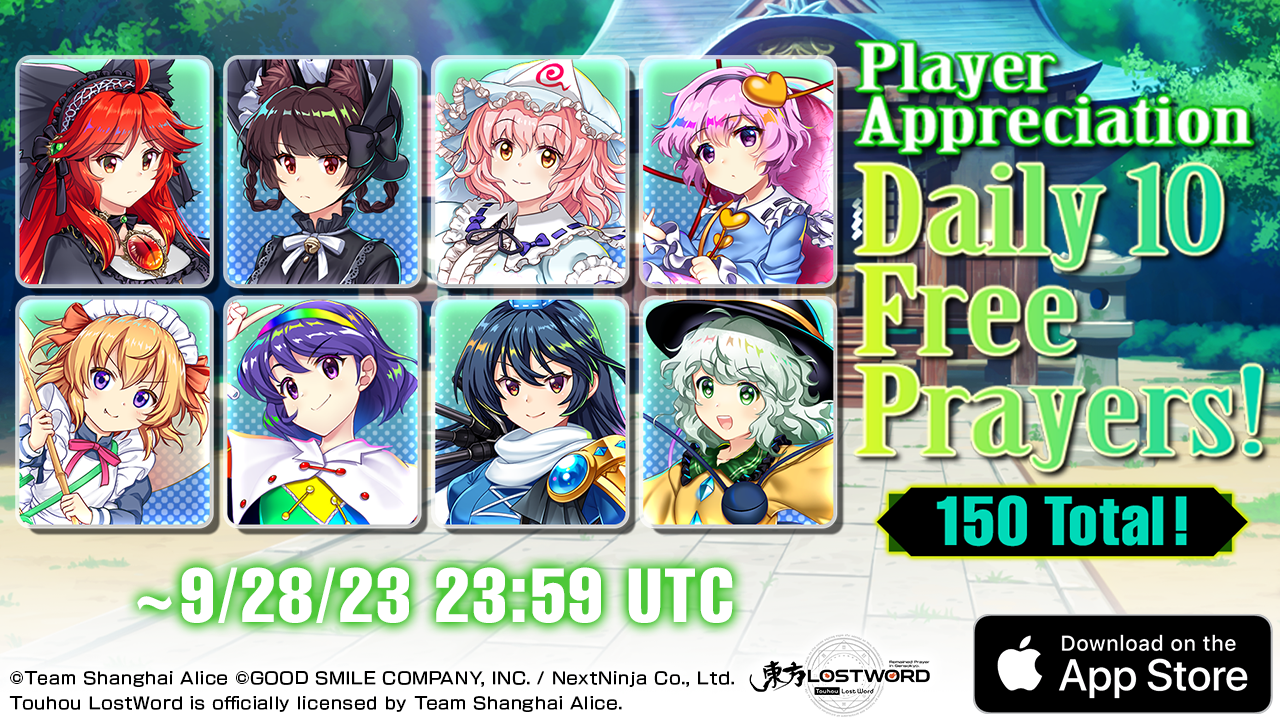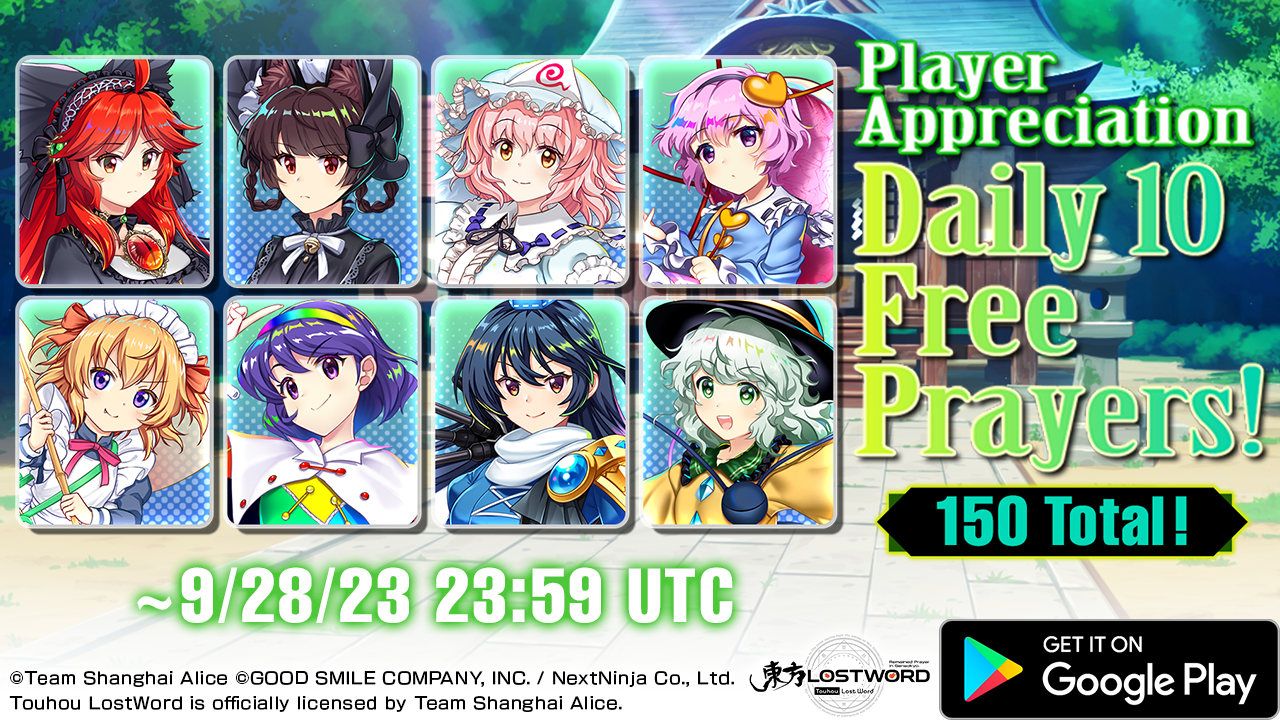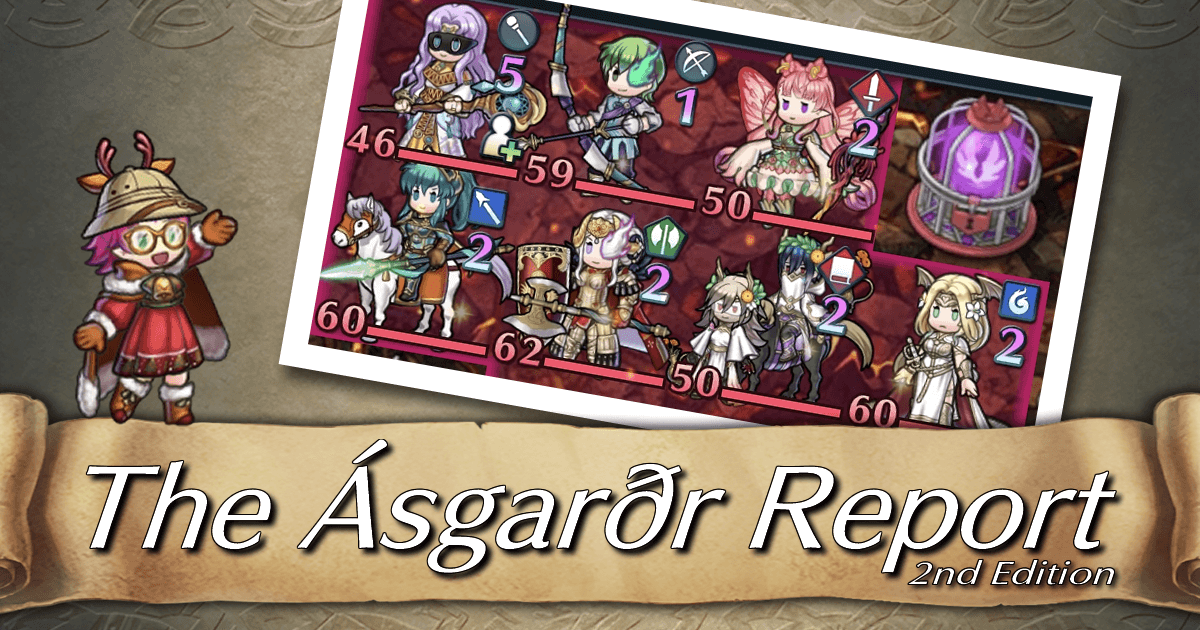Introduction
The Asgardr Report aims to provide high-level Fire Emblem Heroes content on a regular basis. Each article will contain 3-4 topics related to the end-game content of the game; Aether Raids (Offense & Defense) and Arena.
In this month’s edition of the Asgardr’s report, we would first discuss the potency of Area-of-Effect (AoE) specials in Aether Raids Offense. We will then assess some of the common defensive archetypes in Aether Raids Defense and analyze each of their strengths and weaknesses. We will then round up the article by analyzing the new developments within the game, be it refines, skills, etc.
Aether Raids Offense Strategy Spotlight
In the previous edition of the Asgardr report, we discussed briefly all the common strategies that are used in Aether Raids Offense. Moving forward, should there be strategies that we had previously not covered in that article, we would write about it if we felt that the strategy does have potential. In this edition, we would like to discuss how Area of Effect (AoE) specials could be used in Aether Raids Offense.
420 Blaz(ing) it
The concept of using AoE specials in a normal player versus environment (PvE) scenario such as Grand Hero Battles is nothing new since the introduction of Special Spiral which was a rather long time ago. In a way, using AoE skills in Aether Raids Offense is very similar to using it in PvE; repeatedly use it and use sheer firepower of it to take everyone out. Outside of the obvious Blazing Wind, which is already frequently used in PvE as the damage pattern is likely to be the most consistent, Blazing Flame is also worthy of consideration as it is potentially stronger on Turn 1 when the enemy team is likely grouped up together in a line.
As maps in Aether Raids tend to be more synergistic and there is a turn limit, it is imperative for a player to be able to pre-charge it using skills such as Time’s Pulse, Infantry Pulse, and Rafiel’s Groom’s Wings. Damage can be further boosted using debuffs such as Sabotage RES / DEF or using buffs such as ATK Opening. This ensures that the said nuke has the highest chance of taking the foe out even if the said unit is supported by his allies.
As such, units that could use these builds tend to be Infantry, with bonus points if the said unit has a high ATK stat and has some form of pre-charge capabilities such as Sonya’s Dark Excalibur and Ophelia’s Missiletainn. Legendary Lilina could also potentially be considered under this category due to Gifted Magic only being on 2 cooldowns.
The main counter to this offensive strategy would be the Pulse Tie skills, with Odd Pulse Tie being the best choice as it immediately stops the pre-charge during the attacker’s enemy phase. This meant that the attacker only has 1 turn to approach the foe should the defender employs the skill on the defense team. The extreme inaccessibility of Odd Pulse Tie (Bridal Oboro is the only one with the skill) does mean that such counters are going to be almost non-existent, to say the least. A slightly more accessible option would be to use Even Pulse Tie, which is available in the Divine Codes 2 Shop from Nils, but this does give the attacker an extra turn to approach.
Another potential counter would be to tackle it in a similar manner to a hit and run strategy; have a chase unit that could reach the attacker should they attempt to run away. However, this is potentially be blocked by using either isolation such as from Mila or Bridal Fjorm, by protecting using Save skills, or simply body-blocking using Gatekeeper and Detailed Report.
Asgardr Hall of Fame
The Asgardr’s Hall of Fame is a form of recognition for units that fulfills either of the following 2 requirements.
- The unit is sufficiently common in Aether Raids Offense strategies and performs at a sufficiently high level.
- The unit performs at an exceptional level even if they are less accessible without a steep learning curve.
Updates
-
Valentine’s Henriette is added to the Hall of Fame as she is sufficiently common in many of the offensive line-ups, and her performance as a Save unit is decent due to her stat distribution.
- Ophelia and Legendary Lilina are added to the Hall of Fame due to the potency of Area-of-Effect strategies as described above.
Enemy-Phase
Main
Support
Player-Phase
Main
Support
Aether Raids Defense Archetypes & Analysis
From the previous edition of the Asgardr Report, we established a baseline of meta in Aether Raids Offense. In this section, we would apply the concepts introduced to analyze the strengths and weaknesses of each defensive archetype. We would be using the units from the Asgardr’s Hall of Fame as points of reference in the discussion.
The pictures generated for each defense team are just samples for each team archetype and are not meant to be copied directly. Should players wish to use the team archetype in their own defenses, it is highly recommended for players to understand the philosophies behind each archetype, and they should adjustments according to the units they actually own.
All defense team pictures are generated from AskrArchives.
Bridal Catria Cluster
The Bridal Catria Cluster (also known as a Catria Ball) is a common archetype that is frequently seen in the upper echelons of Aether Raids. The team hinges around Bridal Catria’s Wedding Bell Axe, where it grants all units within 2 spaces the ability to warp to allies within 2 spaces, and more importantly; Triangle Attack. This enables any unit to attacks twice as akin to a Brave Weapon so long as there are units within 2 spaces with Triangle Attack as well.
While it is possible to load up multiple nukes on the team, the usual practice for a Bridal Catria Cluster is to leverage on both Far Saves and Near Saves to ensure that the team is difficult to engage. The armor mobility is less of an issue due to the warping effect of the Wedding Bell Axe. This meant that should players fail to take the units out on Turn 2, it is very likely for the team to remain clustered together, making it potentially rather awkward to face against.
Such teams are usually very strong against enemy-phased focus team compositions. Due to the double attacks, not only the damage is essentially doubled, but there are also more opportunities for the initiator to charge up specials, which is potentially even more deadly. Saves skill does mean that there is a rather difficult damage check to meet, which does mean that simply being able to run away is not enough; a unit needs to be able to do damage.
On the contrary, this team falls apart if a player could break through the units with Save skills. As the overall threat range of the unit is low, it is possible to set up enough combat buffs for nukes to potentially brute-force this match-up. AoE skill users could also perform phenomenally against these Save Armors due to their sheer firepower as well. Lastly, some of the variants of the team are prone to get isolated due to their choice of dancers.
Armor Ball
The concept of this team is to leverage on the alternative win condition for the defender; the attacker fails to take out all units within the time limit. In a way, this is kind of similar to a Bridal Catria cluster, except you design the team such that the Armor Ball simply does not move. This can be done by unequipping weapons at the front with an assist so that it will just repeatedly use assist skills without moving.
Of course, this meant that tanking simply is not much of an option, as there is nothing to tank due to the defense team simply not attacking, to begin with. However, this team essentially concedes all the space to the attacker, which meant that whatever weaknesses Bridal Catria clusters have, Armor Balls will also have albeit without the player-phase threat.
Legendary Sigurd Line
The quintessential method of denying space, this team fields an occasional off-season Legendary Sigurd in the team to control as much space as possible. This is done with his Holy Knight Aura, which not only increases his movement by 1 by default, it also grants all his allies 1 extra movement should the special activate regardless of combat outcome (and yes, even if he’s taken out). Usually, this is combined with high mobility units such as ranged cavalries with the occasional melee cavalries as well. Specifically in Dark, the presence of Nott with Pathfinder further adds a layer of unpredictability to the defense team.
The extremely high threat range meant that it preys on the attacker’s carelessness, as attackers might get one of their support or mythic units sniped by the increased mobility. The introduction of Safety Fence meant that the attacker at least has 1 turn to set up before engaging in combat, making it much more forgiving compared to the past.
Such team compositions are strong against the enemy phase that solely focuses on a single unit, as most of the time not only is that single tank is unlikely to survive the repeated onslaught due to overlaps, the support or mythics are more likely to get taken out. However, such units are falling out of favor and shifting towards the use of Savior skills, which is a direct counter against such defense teams as it protects the weaker combat units from getting taken out. Cavalry effective units such as Micaiah also will have an easy time against Legendary Sigurd team compositions.
Lastly, most of the time teams revolving around Legendary Sigurd do not have the space to fit in a Far Save unit to soak offensive pressure. This meant that any form of all-in compositions (which includes units such as any Galeforce unit, Legendary Leif, and Ninja Lyn) in theory, is probably rather effective as well.
Cavalry Line
The classical cavalry line uses multiple cavalries to deny the space of the opponent. In many ways, this is very similar to Legendary Sigurd teams, albeit with more weaknesses with the only benefit being able to field a fully blessed team rather than taking a penalty from fielding a potentially off-season Legendary Unit.
The philosophies are the same as the previous team; multiple ranged cavalries that extend to the first row and pray the supports could be taken out. There is also the option of using New Year Peony along with the 7th unit mechanic to ensure that Peony provides a large amount of in-combat buffs, but that could be easily dodged as that only influences a single line.
This team preys on anyone that runs a full row of offensive structures, as it will result in the foe not having any space to hide from the incoming attacks. However, it can be assumed that the more seasoned players would avoid running a full row of structures. Furthermore, the same weaknesses as Legendary Sigurd teams apply; Safety Fence, lack of frontline to soak offensive pressures, and Far Save invalidating such teams altogether.
Infantry Pulse
Other than Cavalry lines, Infantry Pulse is also one of the teams that pre-dates the modern meta. Infantry Pulse teams rely on having pre-charged specials using the likes of Infantry Pulse and any form of extra charges such as those of Dark Excalibur and Missiletainn to deal a substantial amount of damage to the foes. While Pulse Smoke is a hard counter to such strategy, it can be argued that it is seeing much lesser play as teams are shifting towards the use of Far and Near Saves, which has an opportunity cost of the Passive C slot. This meant that one of the hardest counters of such strategies might no longer be as common, and it might be an opportune time to bring back special pre-charges again.
For the enemy phase, there are 2 big issues that Infantry Pulse teams need to address against the modern meta; damage reduction and Pulse Tie skills. Skills that pierces through damage reduction are more of an exception rather than the norm. This meant that Infantry Pulse teams would potentially struggle to burst the foe’s tanks down, as damage reduction could be seen as an effective HP boost to the tanks. Even Pulse Tie is another skill to look out for as it usually targets the attacker at the tail end of the Infantry Pulse chain, which is usually the hardest hitting one as well.
Lastly, similar to Bridal Catria Clusters, Infantry Pulse teams usually require the attack range to be fairly compact to maximize the amount of attacker overlap in the team. This meant that the exact problems would occur; conceding space that allows the foes to set up on you in the player phase.
Dance / Heal Traps
These 2 works rather similarly; using a pre / post-combat assist to extend the range of the team, and ensuring that the foe has insufficient space to set up. Players can then insert more rallies to increase the number of overlapping attackers to ensure the demise of the attacker.
The biggest issue with such teams is the Safety Fence and the use of isolation. In the past, such teams are probably the most common as players had to go in on Turn 1 due to the existence of Odd Recovery, which bypass the use of isolation. Since the introduction of the Safety Fence, players can now choose to engage only on Turn 2, which totally undermines Odd Recovery. The only alternative that exists is Sara, which is extremely limiting due to her lackluster movement and disruption unlike the usual cavalries with a Flash stave.
Furthermore, as Odd Tempest is also indirectly nerfed from the fence, this meant that usually such teams are coupled by cavalry units barring exceptions such as Brave Alm and Yuri. This meant that it will exhibit similar problems as Legendary Sigurd teams and Cavalry Lines; relatively weak to Far Save and Cavalry effective weapons.
Conclusion
While the list of maps above is not exhaustive, there are recurring themes in terms of the weaknesses of each map. High threat range compositions are inherently reliant on cavalries, which makes them a prime target for using Save tanks such as Valentine’s Henriette and Brave Hector. Whereas, more compact team compositions such as the Bridal Catria Cluster and Infantry Pulse teams are more vulnerable to player phase strategies.
For Aether Raids Offense, the main takeaway would be to be prepared to utilize player-phase strategies, as some maps are inherently weaker to those strategies. This includes the likes of using Galeforce or Hit and Run strategies. Specifically, the AoE archetype as explained in the first section could be useful to counter against Far Save units that are difficult to break down.
Whereas, it is of the author’s opinion that Aether Raids Defense is pretty much a lost cause; as player’s choice of strategies increase, the number of ways to approach the defense maps, in turn, increases as well. Outside of praying that the attackers are tactically inept, there is probably not much a defender could do to prevent all the possible counterplays against your team.
That is not to say a defender could not do anything. Take note of all the common strategies that you observe against your maps, and do your best to at the very least counter those. The Asgardr Hall of Fame could be used as a checklist for the defense team’s strengths as weaknesses. While the existence of a perfect defense team is rather unlikely, it is still possible for you to statistically be more likely to make it out alive in the modern meta.
However, that also meant that there will be seasons in which you still get smashed even though you have a good team. If that’s the case, my condolences.
This Month in Fire Emblem Heroes
In this segment, we would focus on units or skills that the author thinks are new and going to be meta-relevant moving forward due to the updates introduced in the game. For this month, this segment would cover from the introduction of the Choose Your Legends 3 refine, until the Mythic Banner introduced in September. While Scion Leif and Scion Larcei are rather powerful units, we will not be covering them as they share enough similarities to the current roster of units in the game (Leif can be compared to his Legendary self, while Larcei is similar to many speedy melee infantry units).
Yuri
In terms of effective range, Yuri can be seen as a Ranged Cavalry unit due to Honorable Blade’s extra movement it grants. One shortcoming that Yuri has however is that combat-wise, Honorable Blade does not do much being merely a cooldown -1 weapon that gives ATK and SPD. This pales in comparison to many of the modern combat units which grant additional effects such as Null Follow Up, effective damage, Null Guard, or true damage.
However, that could be easily fixed due to Yuri’s movement type. As an Infantry unit, his special could be easily pre-charged. Yuri’s base kit even came with Time’s Pulse along with Honorable Blade’s cooldown reduction, making him a prime target to charge more powerful special. In terms of raw damage output, the best special that Yuri could run is probably the AoE specials such as Blazing Wind or Blazing Flame. Yuri could then utilize the Canto effect on his weapon to evacuate safely.
Notable partners include Rafiel as he could singlehandedly charge up Yuri’s Blazing Wind special, and Gatekeeper, which could not only provide Infantry Pulse support but also serve as a blockade to protect Yuri after he evacuated from the frontlines.
There are probably 2 choices for his B skill; Disarm Trap and Special Spiral. Disarm Trap allows Yuri to ignore traps in the context of Aether Raids Offense, which could be rather helpful especially for Turn 1 plays, while Special Spiral enables Yuri to continuously charge up his AoE specials.
Muspell
As the saying goes; the best defense is a good offense. Muspell’s Domain of Flame does provide the opportunity for some of the units to be more likely to land a kill in a single strike, which denies the foe’s opportunities for a follow-up. Unlike cooldown acceleration effects such as Brave Lucina and Summer Hilda which could potentially be denied by skills such as Guard, it is significantly harder to stop, with the only counterplay being damage reduction which can be easily brute-forced by stacking even more ATK. While the obvious synergy is Vantage units such as the likes of Brave Marth and Kronya, this ability is rather helpful for units that have ways of doing even more damage in the first hit. This includes the likes of Winter Altina, Laslow, Black Knight with Black Luna, or Winter Sothis with Sirius.
Muspell being a dragon also meant that even though he is a Cavalry unit, he still has access to Dragon Wall, which potentially makes him a decent option as a melee specialist despite his movement type. His stat distribution is pretty good for a melee specialist so long as the foe does not follow up, and Domain of Flames does help out quite a bit in that aspect. Should players wish to use a melee specialist Muspell, swapping out his weapon for Pale Breath would not be a bad idea to provide him with more relevant stats and abilities suitable for a melee specialist.
Brave Alm / Brave Eliwood
These 2 units perform very similar functions in an Aether Raids Defense; being a pain in the butt for most unit who is running Near Save. Both units can be built to prevent counterattacks against physical foes (Alm has it in his weapon, Eliwood could inherit Windsweep) while having dragon effectiveness. This, in essence, cover for almost all weapon types except for tome and stave units, which are extremely unpopular choice to engage in melee combat. Furthermore, both Alm and Eliwood have extra tricks up their sleeves; Alm has Scendscale which will probably punch a hole to any tanks, while Eliwood is a giant stat ball in the player phase while having SPD-based damage reduction.
While it is too early to say that these 2 units will be common in Aether Raids Defense, players could still prepare against them should they be common in the near future. One good solution would be to look into tanks that could stack SPD and DEF. As Windsweep relies on meeting the SPD threshold, players could look into trying to outspeed the opponent with the help of unit supports and the choice of the melee unit.
Players could look into melee specialists that are not necessarily armored, such as the likes of Brave Dimitri, Scion Larcei, Chrom, or even your generic Lance Fliers should you be courageous enough. Using Null C Disrupt on your melee specialists is also a possible option to ensure that you could counterattack despite not meeting the speed check
Final Remarks
We hope you enjoyed this edition of Asgardr’s Report. In the next edition of the Asgardr Report, we would be diving into unit-building for the end game, be it in Aether Raids or in Arena. Join us as we dive into generic hell and inhale copium with us as we try to salvage some of these units. Who knows? Maybe your favorites could possibly feature in the next article.














